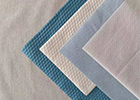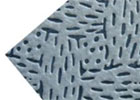The Comprehensive Buyer's Guide to Nonwoven Fabric: Selection and Applications
|
Introduction to Nonwoven Fabric Factors to Consider when Selecting Nonwoven Fabric Nonwoven Fabric Manufacturing Processes Environmental Considerations of Nonwoven Fabric |
Introduction to Nonwoven Fabric
Nonwoven fabric is a highly versatile material that has garnered widespread recognition across diverse industries, thanks to its exceptional properties and myriad of applications. This all-encompassing guide is geared towards offering an insightful view of nonwoven fabric, encompassing its defining characteristics, as well as the pros and cons of its utilization in various applications.
A Deep Dive into Nonwoven Fabric and its Exceptional Traits
Nonwoven fabric distinguishes itself by the process of bonding fibers through mechanical, chemical, or thermal means, foregoing the conventional weaving or knitting. The result is a lightweight, breathable fabric known for its resistance to tearing and abrasion. Nonwoven fabrics can be crafted from natural, synthetic, or blended fibers.
One of the standout features of nonwoven fabric is its remarkable absorbency, positioning it prominently in industries like healthcare and hygiene. What's more, nonwoven fabric can be engineered to possess tailored properties such as water repellency, flame resistance, or antimicrobial capabilities.
Nonwoven fabric's superior drapability and conformability make it a coveted choice for applications that prioritize flexibility and adaptability, be it in geotextiles or automotive interiors. Its versatility extends to include applications in filtration, agriculture, packaging, and an array of other fields.
Weighing the Benefits and Considerations of Nonwoven Fabric Utilization
The utilization of nonwoven fabric in your products or applications offers a slew of benefits. First and foremost, nonwoven fabric stands out as a cost-effective solution, efficiently manufactured in large quantities. It boasts commendable strength and durability, assuring its resilience in demanding conditions. Additionally, nonwoven fabric is celebrated for its superior liquid absorption and retention properties.
Nonwoven fabric is incredibly user-friendly and can be manipulated through cutting, stitching, or molding to accommodate various shapes and sizes, all without fraying. Moreover, it can be tailored to a diverse spectrum of weights, thicknesses, and densities to align with specific requirements.
Nevertheless, it's crucial to bear in mind the potential downsides associated with nonwoven fabric utilization. These include reduced breathability when compared to woven fabrics, limitations in strength for certain applications, and intricacies surrounding recycling and disposal due to its blend of fibers and treatments.
In essence, nonwoven fabric unfolds a myriad of advantages and can be seamlessly tailored to serve a plethora of applications across diverse industries. Armed with an understanding of its unique properties and a keen eye on the pros and cons, you can confidently make informed decisions when opting for nonwoven fabric that perfectly fits your specific requirements.

Factors to Consider when Selecting Nonwoven Fabric
When it comes to choosing the right nonwoven fabric, several essential factors should be on your radar. To ensure that you make an informed decision tailored to your specific application, consider these key elements, ranging from material composition and characteristics to weight and thickness.
Understanding Material Composition and Characteristics
The material composition of nonwoven fabric is a pivotal consideration as it significantly impacts its performance across different applications. Here's what you need to keep in mind:
1.Fiber Type: Nonwoven fabrics can be crafted from a variety of fibers, including polyester, polypropylene, rayon, and more. Each fiber boasts unique qualities like strength, durability, moisture resistance, and breathability. Selecting the right fiber type hinges on your application's specific requirements.
2.Bonding Method: Nonwoven fabrics come to life through various bonding methods, such as thermal bonding, chemical bonding, or mechanical entanglement. Each bonding method influences the fabric's properties, encompassing strength, elasticity, and texture. Evaluating your application's demands will lead you to the most suitable bonding method.
3.Treatment and Finishing: Nonwoven fabrics often undergo additional treatments and finishing processes to enhance their performance. These treatments can range from antimicrobial finishes and flame-retardant coatings to water-repellent treatments and more. Knowing your application's distinct needs will guide you in choosing fabrics with the right treatments and finishes.
Weight and Thickness Considerations
The weight and thickness of nonwoven fabric are pivotal factors contingent on your intended use. Here's a quick rundown :
1.Weight: Nonwoven fabric weight is typically measured in grams per square meter (gsm). Weight directly influences the fabric's strength, durability, and absorbency. Lighter weight fabrics tend to be more breathable and flexible, while heavier weight fabrics offer enhanced strength and durability.
2.Thickness: Nonwoven fabric thickness is measured in millimeters or inches and dictates the fabric's bulkiness. Thicker fabrics provide increased cushioning and insulation, while thinner fabrics offer better drapability and flexibility. Evaluating your application's demands for protection, insulation, or flexibility is crucial when choosing fabric thickness.
By taking into account material composition, characteristics, weight, and thickness considerations, you can make a well-informed choice when selecting the ideal nonwoven fabric for your specific application. Remember to thoroughly assess your requirements and don't hesitate to seek advice from fabric manufacturers or experts to ensure a tailored decision.

Types of Nonwoven Fabrics
Nonwoven fabrics have become a go-to choice in numerous industries, thanks to their remarkable versatility, durability, and cost-efficiency. In this comprehensive guide, we'll delve into two prominent types: spunbond nonwoven fabric and meltblown nonwoven fabric. Let's take an in-depth look at each type, their unique properties, and their diverse array of applications.
Spunbond Nonwoven Fabric: Unveiling its Versatility
Spunbond nonwoven fabric is crafted by bonding continuous filaments into a web-like structure through thermal processes. The outcome is a robust and resilient fabric renowned for its resistance to moisture, chemicals, and abrasion. This type of nonwoven fabric finds its stride in various applications, including:
• Medical and healthcare: The breathability and fluid resistance of spunbond nonwoven fabric make it indispensable in producing disposable medical gowns, surgical masks, and drapes.
• Agriculture: It plays a pivotal role in crop covers, nursery pots, and weed control mats, offering protection and growth enhancement for plants.
• Geotextiles: Spunbond nonwoven fabric is a cornerstone of geotextile applications, from erosion control to soil stabilization and drainage systems.
• Furniture and bedding: Its softness and durability make it a favored choice in creating upholstery fabrics, mattress covers, and pillows.
• Packaging: It's embraced as a reliable packaging material, giving rise to a wide array of products, including bags, pouches, and wraps.
Meltblown Nonwoven Fabric: Mastering Filtration
Meltblown nonwoven fabric is produced through the extrusion of melted thermoplastic polymers, which are then rapidly cooled to form microfibers. These microfibers are randomly dispersed to create a web-like structure known for its exceptional filtration properties. Meltblown nonwoven fabric finds its forte in various applications, including:
• Filtration media: It is the backbone of air and liquid filtration systems, making its mark in face masks, HVAC filters, oil and fuel filters, and water purification systems.
• Absorbent products:Its high absorbency properties are harnessed in the production of absorbent pads, wipes, and diapers.
• Insulation materials: Industries like automotive, construction, and appliances turn to meltblown nonwoven fabric for insulation needs.
• Battery separators: The fabric is crucial in crafting battery separators for enhanced performance and safety .
These are just a glimpse of the myriad applications and uses of spunbond and meltblown nonwoven fabrics. Their adaptability and versatility make them the materials of choice across diverse industries and an array of products.

Nonwoven Fabric Applications
Whether you realize it or not, nonwoven fabrics are all around us, playing a vital role in various industries. From hygiene and medical products to automotive and filtration applications, nonwoven fabrics offer key benefits that make them highly suitable for a wide range of applications.
Hygiene and Medical Products
Nonwoven fabrics are extensively used in the production of hygiene and medical products. Their ability to provide a barrier against liquids, pathogens, and contaminants makes them ideal for applications such as:
• Disposable Diapers: Nonwoven fabrics are used in the outer cover, absorbent core, and backsheet of disposable diapers, offering comfort, breathability, and leakage protection.
• Feminine Hygiene Products: Tampons, sanitary napkins, and panty liners utilize nonwoven fabrics for absorption, softness, and comfort.
• Medical Gowns and Masks: Nonwoven fabrics are crucial in the production of medical gowns, surgical masks, and other protective apparel, providing a barrier against microbes and fluids.
• Wet Wipes: Nonwoven fabrics are used as the base material for wet wipes, offering absorbency, strength, and softness.
Automotive and Filtration Industries
In the automotive and filtration industries, nonwoven fabrics offer exceptional performance and versatility. Some key applications include:
• Automotive Upholstery: Nonwoven fabrics are used as backing materials for automotive upholstery, providing durability, flexibility, and sound insulation.
• Carpet backing: Nonwoven fabrics are employed as backing materials for carpets in vehicles, offering dimensional stability and resistance to wear and tear.
• Filtration Media: Nonwoven fabrics are widely used in air, liquid, and gas filtration systems due to their high filtration efficiency, low pressure drop, and dust-holding capacity.
• Industrial Wipes: Nonwoven fabrics are utilized in industrial wipes for cleaning and degreasing applications, offering absorbency, strength, and lint-free performance.
Nonwoven fabrics' unique characteristics, such as lightweightness, breathability, cost-effectiveness, and customizability, make them a preferred choice across multiple industries. From personal care to automotive and beyond, nonwoven fabric applications continue to expand, providing innovative solutions to various challenges. With ongoing technological advancements, it is likely that we will see even more diverse and exciting applications of nonwoven fabrics in the future.

Nonwoven Fabric Manufacturing Processes
When it comes to nonwoven fabric, it is important to understand the different manufacturing processes involved to make informed decisions regarding selection and applications. This comprehensive buyer's guide will delve into two popular processes: the spunbond process and the meltblown process, explaining their advantages and benefits.
Spunbond Process and its Advantages
The spunbond process is a method commonly used in nonwoven fabric production. It involves extruding molten polymer, typically polypropylene, through spinnerets to form continuous filaments. These filaments are then laid down onto a conveyor belt, creating a web of randomly oriented fibers. Heat and pressure are applied to bond the fibers together, resulting in a strong and durable nonwoven fabric.
Some advantages of the spunbond process include:
1.Strength and Durability: The bonded fibers create a fabric with excellent tensile strength, making it suitable for applications requiring high durability.
2.Breathability: The porous nature of spunbond nonwoven fabric allows for good air permeability, making it suitable for products that require breathability, such as disposable medical gowns or hygiene products.
3.Chemical Resistance: Spunbond nonwovens are resistant to many chemicals, making them suitable for applications in industries such as agriculture or automotive.
Meltblown Process and its Benefits
The meltblown process is another widely used method in nonwoven fabric manufacturing. In this process, high-velocity hot air streams are used to attenuate molten polymer into microfibers. These microfibers are then randomly collected on a conveyor or a drum, forming a fine and uniform web.
Some benefits of the meltblown process include:
1.Filtration Efficiency: Meltblown nonwoven fabric exhibits excellent filtration properties due to its fine fiber diameter, making it ideal for applications such as face masks, air filters, or liquid filtration.
2.Softness: The fine fibers produced through the meltblown process result in a fabric that is soft to the touch, making it suitable for applications requiring comfort, such as wipes or medical dressings.
3.High Absorbency: Meltblown nonwovens have a high capacity for liquid absorption, making them ideal for applications in the hygiene or medical fields.
Understanding these two manufacturing processes for nonwoven fabric can greatly assist buyers in choosing the appropriate materials for their specific applications. Whether you require strength and durability or excellent filtration properties, selecting the right fabric will ensure optimal performance and desired results.

Environmental Considerations of Nonwoven Fabric
Nonwoven fabric is a versatile material used in a wide range of applications, from hygiene products to automotive components. As a savvy buyer or user of nonwoven fabric, it is essential to consider its environmental impact. This article will explore the environmental aspects of nonwoven fabric, including its biodegradability and recyclability options, as well as the sustainability practices in the industry.
Biodegradability and Recyclability Options
One crucial factor to consider when selecting nonwoven fabric is its biodegradability. Biodegradable materials break down naturally without causing harm to the environment. While some nonwoven fabrics are biodegradable, it is important to check the specific composition and manufacturing process.
Recyclability is another significant aspect to consider. Nonwoven fabric can be recycled through various processes such as mechanical recycling, chemical recycling, or energy recovery. Mechanical recycling involves shredding the fabric into fibers, which can be used to make new products. Chemical recycling breaks down the fabric using solvents or heat to retrieve valuable components for further use. Energy recovery involves converting non-recyclable nonwoven fabric into energy through incineration.
Sustainability Practices in the Nonwoven Fabric Industry
The nonwoven fabric industry has been actively adopting sustainable practices to minimize its environmental impact. These practices include:
1.Use of Sustainable Raw Materials: Many manufacturers are incorporating sustainable raw materials, such as recycled fibers or bio-based polymers, into their nonwoven fabric production.
2.Energy and Water Conservation: Efficient energy and water usage are essential sustainability practices in nonwoven fabric manufacturing. Companies are investing in energy-efficient machinery and water recycling systems to reduce their resource consumption.
3.Waste Reduction: Minimizing waste generation is crucial. Manufacturers are employing advanced technologies to optimize material usage, reduce waste during production, and improve overall efficiency.
4.Corporate Social Responsibility: Many nonwoven fabric companies are embracing social responsibility by actively supporting local communities, implementing fair labor practices, and adhering to ethical business standards.
By considering the biodegradability and recyclability options of nonwoven fabric, along with the industry's sustainability practices, you can make informed decisions that align with your environmental values and goals.
It is important to note that specific environmental considerations may vary depending on the type and intended use of the nonwoven fabric. Therefore, it is recommended to consult with suppliers or industry experts to ensure the most suitable choice for your specific application.

Case Studies: Nonwoven Fabric Applications
Nonwoven Fabric: A Key Player in Disposable Masks
Nonwoven fabric takes center stage in the production of disposable masks, a role that has gained immense significance in the wake of the COVID-19 pandemic. The fabric's exceptional attributes, including breathability, lightweight structure, and filtration capabilities, render it the perfect material for this critical application. Typically crafted from polypropylene fibers, the nonwoven fabric used in masks undergoes various bonding techniques such as thermal bonding and meltblown processes.
The utilization of nonwoven fabric in disposable masks offers a multitude of advantages. It creates an effective barrier against airborne particles, crucial in curbing the spread of infections. What's more, the filtration efficiency can be tailored to meet specific requirements, ensuring masks provide optimal protection. Additionally, nonwoven fabrics are prized for their comfort, thanks to their softness and flexibility.
Nonwoven Fabric's Pivotal Role in Geotextiles
Geotextiles represent another pivotal domain for nonwoven fabrics. These versatile materials find application as separation, filtration, reinforcement, or drainage layers in various civil engineering projects. Nonwoven geotextiles typically consist of polyester or polypropylene fibers that are mechanically or thermally bonded together.
The advantages of nonwoven geotextiles in civil engineering are multifaceted. They serve as an effective separation layer between different soil types, preventing intermixing and enhancing soil structure stability. Simultaneously, they facilitate filtration by allowing water to permeate while retaining soil particles. These geotextiles also lend their strength to reinforce weak soil, bolstering overall stability. Their resistance to chemical degradation makes them well-suited for diverse environmental conditions.
By examining case studies that highlight the applications of nonwoven fabric in disposable masks and geotextiles, it becomes clear that this material is both versatile and efficient. Whether safeguarding individuals from airborne particles or elevating the performance of civil engineering projects, nonwoven fabric stands out as a reliable and effective choice. Its unique properties and diverse applications solidify its essential role in numerous industries.

Conclusion
In conclusion, the selection and application of nonwoven fabric play a crucial role in various industries. By understanding the key considerations, such as fiber type, fabric properties, and manufacturing techniques, buyers can make informed decisions and find the most suitable nonwoven fabric for their specific needs. Additionally, exploring the future trends in nonwoven fabric technology can help businesses stay ahead of the curve and harness the benefits of advancements in this field.
Summary of Key Considerations for Selecting Nonwoven Fabric
When selecting nonwoven fabric, it is important to consider the following key factors:
1.Fiber Type: Choose a fiber type that aligns with the desired characteristics of the end product. Common types include polypropylene, polyester, and viscose.
2.Fabric Properties: Evaluate properties such as strength, durability, absorbency, breathability, and barrier properties based on the intended application.
3.Manufacturing Technique: Different manufacturing techniques, such as spunbond, meltblown, or needlepunch, offer unique characteristics and performance attributes. Select the technique that best suits the requirements of the product.
4.Cost: Consider the cost-effectiveness of the nonwoven fabric, taking into account factors such as production volume, product lifespan, and desired performance.
5.Sustainability: Assess the environmental impact of the nonwoven fabric, including factors such as recyclability, biodegradability, and use of recycled materials.
Future Trends in Nonwoven Fabric Technology
The nonwoven fabric industry is constantly evolving, with several trends shaping its future. Some notable trends include:
1.Technological Advancements: Continuous innovation in manufacturing techniques and fiber development is leading to the creation of high-performance nonwoven fabrics with enhanced properties.
2.Sustainability Focus: Increasing environmental concerns are driving the development of eco-friendly nonwoven fabrics, such as those made from biodegradable materials or from recycled fibers.
3.Smart Fabrics: Integration of electronic components and sensors into nonwoven fabrics is enabling the development of smart textiles with applications in healthcare, sports, and other industries.
4.Functional Finishes: Nonwoven fabrics are being engineered with functional finishes, such as antimicrobial or waterproof coatings, to enhance their performance in specific applications.
By staying informed about these trends, businesses can capitalize on the opportunities presented by advancements in nonwoven fabric technology and stay ahead of their competitors in the market.





















